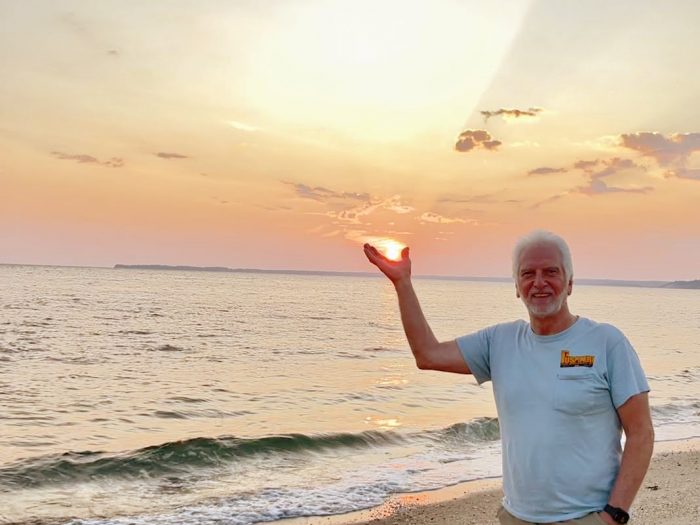SBU ascends in national rankings
Stony Brook University is thriving. We welcomed our largest-ever incoming class this year and are seeing great momentum from the Simons Infinity Investment and our leadership of The New York Climate Exchange. The energy is palpable.
You know how truly special Stony Brook is, and the world is recognizing it, too.
The U.S. News & World Report 2024 Best Colleges rankings have just been released, and for the second year in a row, we moved up significantly and have solidified our spot as the No. 1 public university in New York.
We are now nationally ranked No. 58 overall and No. 26 among public universities, up 19 and 5 spots, respectively. In addition, we climbed to No. 12 in the U.S. for social mobility, which ties us at No. 2 among all Association of American Universities.
Thank you for your continued partnership and support.
Maurie McInnis, President
Stony Brook University
Reconfiguration urgent for Three Village school district
It has been more than 40 years since the idea of reconfiguration was first discussed in the Three Village Central School District.
As a strong supporter of the changes that are long overdue, particularly the ninth grade being moved to the high school where it belongs, I am dismayed to find that it has been pushed back at least one more year. At the board meeting held on Sept. 13, Superintendent Kevin Scanlon announced that all will remain as it is until at least the 2025-26 school year, stating that the shift needed to be done correctly, not quickly (I paraphrase). [See story on page A5].
Now while I agree that the move should be given its due diligence, and I believe that the superintendent has the district’s best interest at heart, I am truly tired of the endless delays. There are so many ninth graders that have been disadvantaged by the continued housing of high schoolers at the junior high level, my own child included. The lack of electives that are offered to our “freshmen” is simply not fair, and it is so disheartening that our students will continue to suffer for it.
When this idea was first floated back in the early 1980s, Ward Melville had graduating classes that were twice as big as anything in the recent past or near future. Wings have been added onto a building that was far smaller when I graduated in a class of 752 and yet will more time be wasted trying to find room to add another grade?
The board and the administration need to stop wasting time on this ridiculous “start time” discussion and make reconfiguration happen already. Every high school on Long Island — and New York state — starts within the same time frame that we do. Teenagers aren’t going to bed any earlier, and a 20-minute start time shift won’t change anything. It’s simple reality.
High school starts early and ninth grade belongs at Ward Melville. Conducting another survey is just sending the pitching coach to the mound for a bullpen stall.
Stefanie Werner
East Setauket
Municipalize LIPA
The contract between the Long Island Power Authority and the private PSEG-Long Island expires December 2025.
There are arguments on both sides of the question, but mostly from PSEG for the status quo. And why not? They’re making billions as a private, for-profit corporation and want it to continue.
Why municipalize? First, the utility would be more efficient with fewer management people needed. Conflicts and delays would be cut because the management structure is united to provide optimal electricity.
Also being state owned and run, there are no shareholders to satisfy, so maintenance and upgrades are done timely and effectively. I remember with National Grid and PSEG, tree trimming was reduced to cut costs.
With Long Island having a high amount of overhead transmission, there were so many service interruptions from trees damaging wires, they were forced to increase the trimming. Events like this will not happen with a municipal grid. Other benefits are lower borrowing rates and access to federal and state funds.
Should we worry about the government running the show? LIPA is a New York State authority like the Triborough Bridge and Tunnel Authority running the tunnels and bridges, or the Transit Authority. They get the job done, have significant maintenance equipment and personnel and create many jobs. A private company wants to reduce personnel and equipment to cut costs and maximize profits.
And from the Tennessee Valley Authority, a government electricity provider: “The Tennessee Valley Authority provides electricity for 153 local power companies serving 10 million people in Tennessee and parts of six states, as well as to 58 large industrial customers and federal installations. We don’t get taxpayer funding; our revenues come from sales of electricity.” They started in 1933 and have a great history of electrifying the South reliably and cost effectively. Can you imagine private companies doing this?
Or the Bank of North Dakota, “a state-owned, state-run financial institution. It is the only government-owned general-service bank in the United States. It is the depository for all state funds in North Dakota, and uses these deposits to fund development, agriculture and small businesses.” It was unaffected by the banking crisis, and being state owned, does not have to please stockholders.
It is way past the time for LIPA to maximize its advantages to benefit the public. The public-private partnership is inefficient, wasteful, raises costs and cuts quality. A properly staffed and equipped municipal power authority is needed now, especially with the attempted transition to “green” energy and its many critical issues.
Mark Sertoff
East Northport
Leave a mark on local military history
The Rocky Point Veterans of Foreign Wars Post 6249 is creating the Suffolk County World War II and Military History Museum and Learning Center that will open on Dec. 7.
We are in the process of collecting military artifacts from veterans and their families that will be exhibited in this museum and creating a history library. If you have any items that you would like to donate or give to Post 6249 on loan, it will surely help our efforts to give this museum a local feeling of patriotism and service from our residents.
There will also be a Wall of Honor for all veterans: active, reservists, National Guard, war and peace time for all Armed Forces components. All veterans are welcome to have their names engraved in black granite on a masonry wall that will be surrounded by a “victory garden” of plants and flowers, especially during the spring and summer.
Anyone who served in the military from all parts of Long Island or this nation could be added to this memorial wall. The cost is $125 for the first name and $100 for each additional person. It is our goal to have over 100 names placed on the wall by our opening and the names of veterans are coming in every day.
We have many families that are adding multiple names of loved ones who have proudly served this country. If there are companies, unions, law enforcement organizations or families who would like to sponsor the creation of this museum, there are opportunities to financially help with $500-$3,000 donations.
All names will be written on a black granite plaque that will be placed at the museum for all to see for many years to come. If you would like to donate any type of item, have a family or friend’s name placed on the Wall of Honor and/or have a sponsorship, please contact Rich Acritelli at 631-839-2996 ([email protected]); or Joseph Cognitore at 631-873-8272 ([email protected]).
The museum will be located directly across the street from the VFW Post 6249, near King Road and Broadway, within the new condominiums on the former site of Thurber Lumber.
Richard Acritelli, Curator
Joseph Cognitore, Post Commander
Rocky Point VFW Post 624
Animal shelter management reflects poorly on Town of Brookhaven
Politics has indeed become a blood sport in daily life.
With the use of social media and the willingness to complain, the Town of Brookhaven’s animal shelter volunteers are among those with a loud voice. After reading the article in the local newspaper [see story, “Volunteers and officials express concerns over Brookhaven animal shelter,” TBR News Media website, Aug. 5] and hearing a report on NPR Radio, these animal lovers have good reason to complain.
These reports about volunteers criticizing the Brookhaven animal shelter are concerning. Volunteers are the lifeblood of an animal shelter. They do a tremendous amount of work for free.
What Brookhaven Town needs is a new animal shelter. The Town of Islip ultimately did just that. It was built because of the constant clamor of complaints from its volunteers and other interested parties.
Town of Brookhaven Supervisor Ed Romaine [R], a person who knows the politics of consensus decisions, has not been responsive. He has heard the continual complaints from the shelter’s most ardent advocates. Yet, he remains silent and unconcerned about those animals who spend time in a shelter about which they are unable to complain.
The conclusion I draw is that if the supervisor of the largest town on Long Island does nothing to help animals who have no voice of their own, what will his response be as a candidate for Suffolk County executive to those who are at least able to express themselves.
Joseph Fritz
East Islip






















